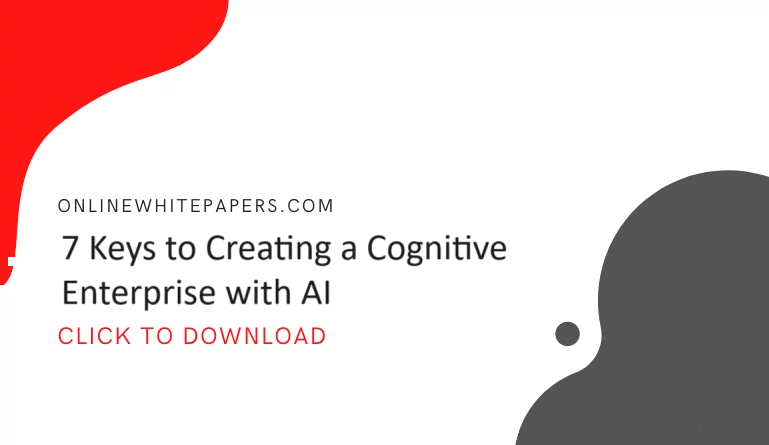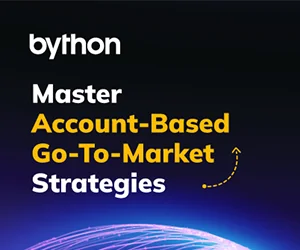Are you sick and weary of fighting to manage your money? With AI-powered budgeting tools, bid adieu to manual budgeting and hello to the financial management of the future.
By 2024, these smart gadgets will have completely changed how we manage our finances by:
- Automating expense tracking and categorization
- Providing personalized budget recommendations
- Leveraging predictive analytics for smarter financial planning
You’ll save time and effort, make data-driven decisions to reach your financial objectives, and have unmatched insight into your spending patterns when AI is your financial partner.
Are you prepared to manage your finances better than ever before? Let’s investigate the realm of AI-powered budgeting and see how, by 2024, it can revolutionize your financial situation.
What is AI-Powered Budgeting?
- AI-powered budgeting uses artificial intelligence to automate and optimize personal financial management.
- AI-driven tools track expenses, set budgets, predict future spending and provide personalized advice.
- AI enhances traditional budgeting by automating tasks, providing real-time insights, and predicting future patterns.
Using machine learning (ML) and artificial intelligence (AI) algorithms, AI-powered budgeting is a cutting-edge method of managing personal finances. Artificial intelligence (AI)-driven systems can automate time-consuming operations, provide real-time insights, and provide personalized suggestions to assist people in making better financial decisions by using massive volumes of financial data and analyzing spending trends.
Examples of AI-Powered Budgeting Tools
In recent years, numerous AI-powered budgeting tools have emerged to help people take control of their finances. Some popular examples include:
- Wally: A completely automated personal finance app that tracks spending, cash flow, and offers personalized advice
- Cleo: A financial chatbot that helps users track expenses, set budgets, and provides real-time insights
- Magnifi: An AI investing assistant that offers personalized, conversational guidance for researching and buying investments, managing portfolios, and learning about investing
- Rocket Money: A tool that tracks recurring payments, identifies unnecessary expenses, and helps users save money through its Smart Savings feature
- QuickBooks: A robust accounting tool that incorporates AI for cash flow forecasting, report generation, and other features useful for small business owners
- Trim: Analyzes spending habits, negotiates bills, and cancels unwanted subscriptions
- Clarity Money: Provides a comprehensive overview of finances, offers personalized savings tips, and helps users find better deals on financial products
- Albert: Combines human expertise with AI to provide personalized financial advice and automated savings
- Qapital: Enables users to set savings goals and automates savings based on personalized rules
- Digit: Analyzes income and spending patterns to automatically transfer small amounts of money into a savings account
- Empower: Offers a suite of AI-powered tools for budgeting, saving, and investing
- SaverLife: Gamifies the saving process and offers rewards for meeting savings goals
- Chime: Provides an AI-powered mobile banking experience with automatic savings and real-time notifications
These tools demonstrate the diverse applications of AI in personal finance management, catering to various user preferences and needs.
How AI Enhances Traditional Budgeting
AI-powered budgeting tools offer several advantages over traditional budgeting methods:
-
Automates Expense Tracking and Categorization
The most time-consuming part of traditional budgeting is keeping track of and classifying spending by hand. By linking to customers’ credit cards and bank accounts and classifying transactions automatically according to preset guidelines or machine learning algorithms, AI-powered solutions streamline this procedure. Because of the substantial time and effort savings, users are free to concentrate on examining their spending patterns and coming to wise judgments.
-
Provides Real-Time Insights and Personalized Recommendations
Real-time financial data analysis via AI-powered budgeting systems yields immediate insights into users’ spending habits, possible areas for development, and tailored suggestions for debt reduction or money savings. Based on the user’s location and consumption habits, an AI tool might, for instance, notify them of an unexpected surge in their utility bills, offer advice on how to bargain for a lower rate, or propose a more affordable service provider.
-
Predicts Future Spending Patterns Based on Historical Data
Artificial intelligence (AI) algorithms are able to forecast future expenses with a high degree of accuracy by evaluating historical financial data to find trends and patterns in customers’ spending patterns. Thanks to this predictive power, customers may budget sensibly, plan ahead, and stay away from debt. An artificial intelligence program might, for example, project a user’s monthly grocery bills based on their previous purchasing patterns, assisting them in allocating funds and making well-informed decisions about meal planning and grocery shopping.
In conclusion, AI-powered budgeting represents a significant advancement in personal financial management, offering users a more efficient, insightful, and personalized approach to controlling their finances. As AI technology continues to evolve, we can expect even more sophisticated and user-friendly tools to emerge, empowering individuals to make smarter financial decisions and achieve their long-term goals.
Benefits of AI-Powered Budgeting
- AI budgeting tools save time by automating data entry and categorization
- They provide improved financial visibility and control for better decision making
- Predictive analytics help forecast future expenses and suggest budget adjustments
-
Saves Time and Effort
The time and effort that AI-powered budgeting systems save is one of their biggest benefits. These intelligent programs replace the need for laborious and prone to error human data entry and categorization. By establishing a direct connection with your bank account and credit cards, AI budgeting solutions automatically import and classify your transactions, guaranteeing precision and consistency.
Additionally, AI budgeting applications modify your budget based on their ongoing learning of your spending patterns. The AI adjusts to your changing income, expenses, and financial objectives so that your budget stays current without requiring frequent manual revisions. Because AI budgeting is dynamic, you can concentrate on other things instead of constantly evaluating and updating your budget.
-
Improves Financial Visibility and Control
Another key benefit of AI-powered budgeting is the enhanced financial visibility and control it provides. These tools offer a comprehensive view of all your accounts in one centralized dashboard, giving you a clear picture of your overall financial situation. This holistic perspective allows you to easily track your income, expenses, and progress towards your financial goals.
AI budgeting applications also proactively alert you to potential overspending or deviations from your budget. By analyzing your spending patterns and comparing them to your predefined budget limits, these tools can identify areas where you may be at risk of exceeding your allocated funds. This early warning system empowers you to take corrective action before minor overspending escalates into a more serious financial issue.
-
Real-Time Insights and Notifications
The real-time nature of AI budgeting tools ensures you always have access to the most current information about your finances. As transactions occur, the application updates your budget and provides instant insights into how these changes impact your overall financial picture. This up-to-the-minute visibility allows you to make informed decisions based on your actual financial status rather than relying on outdated data.
In addition to real-time updates, AI budgeting tools often provide push notifications and alerts to keep you informed about important financial events. For example, you may receive a notification when a bill is due, when you’ve reached a savings milestone, or when you’re close to exceeding your budget in a particular category. These timely reminders help you stay on top of your finances and avoid costly mistakes.
-
Enables Data-Driven Decision Making
AI-powered budgeting solutions use predictive analytics to help you make more informed financial decisions based on facts. These apps can accurately predict your future expenses by examining your past spending habits and taking into account variables like your income, regular expenses, and financial objectives.
With these AI-generated insights at your disposal, you can invest your money more wisely. For example, if historical consumption and seasonal patterns indicate that the AI will bill you more for utilities than normal, you can proactively change your budget to account for this price. By using a forward-looking approach to budgeting, you may lessen the chance of financial surprises by anticipating possible obstacles and making appropriate plans.
Moreover, AI budgeting tools can suggest budget adjustments based on your spending trends and financial objectives. If the AI detects that you consistently overspend in a particular category, it may recommend increasing your budget allocation for that area. Conversely, if you’re routinely underspending in another category, the AI might suggest redirecting those funds to support your savings or debt repayment goals. These personalized recommendations provide a strategic roadmap for optimizing your budget and achieving your financial aspirations.
-
Scenario Planning and “What-If” Analysis
Some advanced AI budgeting tools even offer scenario planning and “what-if” analysis capabilities. These features allow you to explore the potential impact of different financial decisions or life events on your budget. For example, you could use the AI to model how buying a new car or changing jobs might affect your long-term financial outlook.
By inputting various hypothetical scenarios, you can gain valuable insights into the potential risks and rewards associated with different choices. This type of advanced financial modeling was once the domain of professional financial advisors, but AI has democratized access to these powerful planning tools. With AI-powered scenario planning, you can make more confident, informed decisions about your financial future.
-
Personalizes Your Budgeting Experience
AI-powered budgeting tools offer a highly personalized experience tailored to your unique financial situation and goals. Unlike generic budgeting templates or one-size-fits-all approaches, AI adapts to your individual circumstances, creating a custom-fit budget that aligns with your specific needs.
The AI learns from your financial data, identifying your income sources, recurring expenses, spending habits, and savings targets. It then uses this information to generate a budget that accurately reflects your financial reality. This personalized approach ensures that your budget is relevant, realistic, and achievable, increasing the likelihood that you’ll stick with it over the long term.
Furthermore, AI budgeting tools often provide personalized insights, tips, and recommendations based on your financial profile. For example, if the AI notices that you’re paying high interest rates on credit card debt, it may suggest strategies for consolidating your balances or negotiating lower rates. Or, if you’re falling behind on your savings goals, the AI might recommend automating your savings contributions or finding areas where you can cut back on discretionary spending.
-
Goal-Based Budgeting
Goal-based budgeting is supported by a lot of AI budgeting tools, which let you set and monitor progress toward particular financial goals. AI may assist you in defining and prioritizing your goals, whether they are for paying off student debts, saving for a down payment on a home, or organizing a dream vacation.
The AI can manage your finances in a way that promotes your advancement by integrating your goals into your budget. Additionally, it can give you regular reports on your progress toward your goals and make recommendations for how to keep on course. This goal-oriented method of budgeting may be quite inspiring since it makes it easier to link your daily money decisions to your longer-term life goals.
For instance, a study by Mint found that 65% of people who set financial goals are more likely to achieve them when using a budgeting app. AI budgeting tools can significantly enhance this goal-based approach by providing personalized guidance and insights.
-
Integrates with Other Financial Tools
AI-powered budgeting tools often integrate seamlessly with other financial applications, creating a comprehensive ecosystem for managing your money. For example, many AI budgeting apps can connect with your online banking platforms, investment accounts, and credit monitoring services, providing a unified view of your financial life.
These integrations streamline the process of tracking your finances, eliminating the need to manually log into multiple accounts or reconcile data across different platforms. By automatically syncing your financial information, AI budgeting tools ensure that your budget always reflects your most current financial situation.
Some AI budgeting tools even integrate with smart payment systems and digital wallets, allowing you to make purchases and track expenses directly within the app. For instance, you might be able to link your AI budgeting tool to your Apple Pay or Google Wallet account, enabling you to see the impact of your spending in real-time.
-
Open Banking and API Integrations
The rise of open banking and API (Application Programming Interface) integrations has further expanded the possibilities for AI budgeting tools. Open banking allows third-party applications, like AI budgeting tools, to securely access your financial data with your permission. This enables a more seamless flow of information between your various financial accounts and your budgeting app.
API integrations also allow AI budgeting tools to connect with a wide range of other financial services and applications. For example, some AI budgeting apps integrate with investment platforms to help you optimize your portfolio based on your budget and goals. Others may connect with tax preparation software to help you maximize your deductions and plan for tax obligations.
By leveraging these integrations, AI budgeting tools can provide a more holistic, end-to-end financial management experience. They can help you not only create and stick to a budget but also make smarter decisions about investing, saving, and managing your overall financial health.
Key Features of AI Budgeting Tools
- Automate expense tracking and categorization
- Get personalized budget recommendations
- Plan for the future with predictive analytics
In 2024, AI budgeting tools offer a range of advanced features that make managing your money easier and more efficient than ever before. These tools leverage the power of artificial intelligence and machine learning to provide users with insights, recommendations, and automation that traditional budgeting methods can’t match.
-
Automated Expense Tracking and Categorization
One of the most time-consuming aspects of budgeting is keeping track of your expenses and categorizing them correctly. AI budgeting tools simplify this process by automatically syncing with your bank accounts and credit cards, importing your transactions in real-time.
-
Machine Learning for Accurate Categorization
These tools use machine learning algorithms to analyze transaction data and categorize each expense based on patterns and trends. For example, if you frequently make purchases at a particular grocery store, the AI will learn to categorize those transactions as “Groceries” automatically. This saves you time and ensures that your budget is always up-to-date and accurate.
According to a 2023 survey by the Financial Planning Association, 68% of consumers reported that automated expense tracking and categorization helped them stay on top of their finances more effectively.
-
Personalized Budget Recommendations
Another key feature of AI budgeting tools is their ability to provide personalized budget recommendations based on your unique financial situation and goals. By analyzing your income, expenses, and spending habits, these tools can suggest optimal budget allocations across different categories.
-
Adapting to Your Financial Goals
Whether you’re saving for a down payment on a house, planning for retirement, or trying to pay off debt, AI budgeting tools can help you create a budget that aligns with your specific objectives. The AI takes into account factors such as your age, income level, and risk tolerance to recommend a budget that balances your short-term needs with your long-term financial health.
For a deeper dive into the science behind personalized financial recommendations, check out “The Algorithm of You: How AI is Shaping Personalized Finance” by Dr. Lila Singh, a renowned expert in the field of AI and personal finance.
-
Predictive Analytics for Future Planning
AI budgeting tools don’t just help you manage your current finances; they also use predictive analytics to forecast your future income and expenses. By identifying patterns and trends in your financial data, these tools can anticipate potential challenges and opportunities, allowing you to plan ahead more effectively.
-
Identifying Savings Opportunities
For example, if the AI detects that you’re consistently overspending in a particular category, it might suggest ways to cut back or find more affordable alternatives. Similarly, if the tool predicts a potential increase in your income, it can recommend how to allocate those extra funds to maximize your financial growth.
Consider adding a real-world example or case study of how predictive analytics helped someone identify savings opportunities and improve their financial situation.
-
Proactive Alerts and Notifications
To help you stay on track with your budget, AI budgeting tools offer proactive alerts and notifications. These alerts can warn you of potential overspending, low balances, or upcoming bills and payments, ensuring that you’re always aware of your financial situation.
-
Preventing Financial Missteps
By receiving timely notifications, you can take action to prevent financial missteps before they occur. For instance, if the AI detects that you’re close to exceeding your monthly dining out budget, it can send you a notification suggesting alternative meal options or reminding you of your financial goals.
For a comprehensive look at the psychology behind effective financial alerts and notifications, read “Nudge: Improving Decisions About Health, Wealth, and Happiness” by Richard H. Thaler and Cass R. Sunstein.
-
Integration with Other Financial Tools
Finally, AI budgeting tools often integrate seamlessly with other financial tools and services, such as investment platforms, credit monitoring services, and tax preparation software. This integration allows for a more holistic view of your finances and enables you to make informed decisions across all aspects of your financial life.
Popular financial tools and services that integrate with AI budgeting tools include:
- Mint: A personal finance app that tracks spending and offers budgeting advice.
- Credit Karma: A credit monitoring service that provides free credit scores and reports.
- TurboTax: A tax preparation software that helps users file their taxes accurately and efficiently.
Each integration benefits users by providing a comprehensive view of their financial situation and enabling more informed financial decisions.
How to Get Started with AI-Powered Budgeting
- Implement AI-powered budgeting in 5 easy steps
- Choose the right tool, connect accounts, set goals, and adjust regularly
- Take control of your finances with AI-driven insights and recommendations
Step 1: Choose an AI Budgeting Tool
When selecting an AI budgeting tool, consider the features that matter most to you. Look for a tool that offers:
- Secure connections to your financial accounts
- Customizable budget categories
- Goal-setting capabilities
- Regular insights and recommendations
Popular AI Budgeting Tools
Some popular AI budgeting tools include:
- Trim: Automatically negotiates bills and cancels unwanted subscriptions
- Clarity Money: Provides personalized savings recommendations
- Albert: Offers a savings account and investment options
- Qapital: Helps you save money through rule-based automation
- Digit: Analyzes your spending and automatically saves money for you
- Empower: Provides a checking account with built-in budgeting features
- SaverLife: Rewards you for saving money consistently
- Chime: Offers a checking account with automatic savings features
Step 2: Connect Your Financial Accounts
Once you’ve chosen an AI budgeting tool, the next step is to connect your financial accounts. This typically involves:
- Logging into your AI budgeting tool
- Selecting the option to add or connect accounts
- Entering your login credentials for each account you want to connect (e.g., bank accounts, credit cards, loans, investments)
- Granting secure access for the AI tool to aggregate your financial data
Most AI budgeting tools use bank-level encryption and security measures to protect your sensitive information. However, it’s essential to review the tool’s privacy policy and ensure you’re comfortable with how your data will be used and stored.
Step 3: Set Up Your Budget Categories and Goals
After connecting your accounts, the AI budgeting tool will typically suggest budget categories based on your spending history. Review these categories and customize them as needed to reflect your unique financial situation.
Common Budget Categories
Common budget categories include:
- Housing (rent/mortgage, utilities, maintenance)
- Transportation (car payments, fuel, public transit)
- Food (groceries, dining out)
- Entertainment (streaming services, hobbies, travel)
- Healthcare (insurance, prescriptions, medical bills)
- Personal expenses (clothing, hygiene products, gifts)
- Debt payments (student loans, credit card balances)
- Savings (emergency fund, retirement, specific goals)
Next, set realistic financial goals within your AI budgeting tool. These might include:
- Building an emergency fund
- Paying off debt
- Saving for a down payment on a house
- Planning for retirement
- Funding a vacation or large purchase
Your AI budgeting tool will use these goals to provide personalized recommendations and track your progress over time.
Step 4: Review and Adjust Your Budget Regularly
AI-powered budgeting is an ongoing process. To get the most out of your AI budgeting tool, make a habit of reviewing your budget and the tool’s insights and recommendations on a weekly basis.
Look for areas where you might be overspending or have room for improvement. If needed, make adjustments to your budget categories or goals based on your current financial situation and priorities.
Remember that budgeting is a learning process, and it’s okay if you don’t get it perfect right away. The key is to stay engaged with your AI budgeting tool and continuously refine your budget over time. With consistent effort and the help of AI-driven insights, you’ll be well on your way to achieving your financial goals.
By following these steps and leveraging the power of AI, you can take control of your finances and make smarter money management decisions. With the right AI budgeting tool and a commitment to regular review and adjustment, you’ll be able to create a budget that works for you and helps you reach your financial goals faster.
Tips for Success with AI-Powered Budgeting
- Consistency, customization, and engagement are key to AI budgeting success
- Leverage AI insights for data-driven financial decisions and planning
- Implement personalized recommendations to optimize your budget
As Alex Jimenez, Chief Strategy Officer at Extractable, explains, “AI-powered budgeting tools are revolutionizing personal finance management. By providing personalized insights and recommendations based on your unique financial situation, these tools empower you to make smarter money decisions and achieve your financial goals more efficiently.”
-
Be Consistent with Tracking and Categorization
Consistency is crucial when using AI-powered budgeting tools. The more data you provide, the more accurate and valuable the AI’s insights and recommendations will be. Make it a habit to regularly review your transactions and recategorize them as needed. This ensures that the AI learns from your specific financial behaviors and patterns.
“Consistency is key to ensuring the AI’s insights are accurate and actionable,” notes Kristen Euretig, CFP® and founder of Brooklyn Plans. “By staying on top of your transaction categorization and providing feedback, you’re essentially training the AI to better understand your unique financial situation.”
If you notice any errors or anomalies in the AI’s categorization, be sure to flag them. This feedback helps the AI learn and improve its accuracy over time.
-
Leverage the AI’s Predictive Insights
One of the most powerful features of AI-powered budgeting tools is their ability to provide predictive insights. These insights can help you plan ahead financially and make data-driven decisions about your spending and saving habits.
According to a recent study by Accenture, “AI has the potential to boost rates of profitability by an average of 38 percentage points and could lead to an economic boost of US$14 trillion in additional gross value added (GVA) by 2035.”
By leveraging the forecasting capabilities of your AI budgeting tool, you can tap into this potential and make more informed financial decisions. For instance, a study by Deloitte found that AI-driven forecasting can reduce forecasting errors by up to 50%.
-
Engage with Personalized Recommendations
AI-powered budgeting tools not only provide insights but also offer personalized recommendations to help you optimize your budget. These recommendations are based on your unique financial situation and goals, making them highly relevant and actionable.
As Erica Gellerman, CPA and personal finance expert, advises, “Don’t just passively consume the AI’s recommendations. Actively engage with them, review the suggestions, and implement the ones that align with your financial objectives. The more you interact with the AI, the more it learns about your preferences and can tailor its advice accordingly.”
In addition to implementing the AI’s recommendations, take advantage of the educational resources often provided by these tools. Many AI budgeting platforms offer articles, videos, and other content to help you improve your financial literacy and make more informed decisions. By continuously educating yourself and engaging with the AI’s advice, you’ll be well on your way to optimizing your budget and achieving your financial goals.
Choosing the Best AI-Powered Budgeting Tool in 2024
- Select a tool that aligns with your financial goals and offers personalized insights
- Prioritize security and data privacy when evaluating AI budgeting tools
- Take advantage of free trials to find the best fit for your needs
-
Key Features to Look for in an AI-Powered Budgeting Tool
It’s critical to seek strong features that will assist you in managing your expenses more effectively when choosing an AI-powered budgeting application. In order for the tool to automatically link with your bank accounts and classify your transactions without the need for human input, automated tracking is a need. You’ll save time and get a more realistic view of your spending patterns by doing this.
Analytical prediction is an additional potent element to contemplate. The program might offer useful insights into your future spending and saving potential by evaluating your financial data. In addition, it can notify you of impending invoices or low account balances, which can help you remain on top of your money and steer clear of costly errors.
Personalized insights are equally important. The best AI budgeting tools will offer customized recommendations based on your unique financial situation and goals. Whether you’re saving for a down payment on a house, planning for retirement, or trying to pay off debt, the tool should be able to provide tailored advice to help you reach your objectives faster.
Examples of Top AI-Powered Budgeting Tools
- Mint: Known for its user-friendly interface and comprehensive features
- YNAB (You Need a Budget): Focuses on helping users create and stick to a budget
- PocketGuard: Offers a simple, streamlined approach to budgeting and saving
- Personal Capital: Provides robust investment tracking and retirement planning tools
-
Security and Data Privacy Considerations
When dealing with sensitive financial information, security and data privacy should be top priorities. As you evaluate AI-powered budgeting tools, look for those that employ strong encryption and have a proven track record of protecting user data.
Reputable tools will have clear privacy policies outlining how your data is collected, stored, and used. They should also offer two-factor authentication and other security measures to prevent unauthorized access to your account. For example, Mint uses 256-bit encryption and has a strong privacy policy.
-
Compatibility with Your Financial Institutions
To get the most out of an AI-powered budgeting tool, it should seamlessly integrate with your existing financial accounts. This includes your bank accounts, credit cards, loans, and investment portfolios.
Before committing to a tool, verify that it supports the financial institutions you use. Most popular tools offer a wide range of integrations, but it’s always best to double-check to avoid any compatibility issues down the line. For instance, YNAB supports over 10,000 financial institutions.
-
User Experience and Customer Support
A budgeting tool is only effective if you actually use it. When evaluating AI-powered options, consider the user experience and overall ease of use. The tool should have an intuitive interface that makes it simple to view your financial data, set goals, and track your progress.
Additionally, look for tools that offer reliable customer support. Whether you have questions about a specific feature or encounter a technical issue, it’s important to have access to knowledgeable support staff who can help you resolve any problems quickly.
Questions to Ask When Evaluating User Experience
- Is the tool’s interface clean, organized, and easy to navigate?
- Can you easily connect your financial accounts and view your data?
- Are the tool’s insights and recommendations clear and actionable?
- Does the tool offer mobile apps for on-the-go access?
-
Take Advantage of Free Trials
Many AI-powered budgeting tools offer free trials, allowing you to test drive the features and functionality before committing to a paid subscription. Take advantage of these opportunities to find the tool that best fits your needs and preferences.
During the trial period, explore the tool’s various features and settings. Connect your financial accounts, set up budgets and goals, and evaluate the quality of the insights and recommendations provided. This hands-on experience will give you a better sense of which tool is the right choice for your financial management needs.
For example, Mint offers a free trial with no credit card required, while YNAB offers a 34-day free trial.
Your AI Budgeting Journey Starts Today
AI-powered budgeting tools automate expense tracking, provide personalized recommendations, and predict future spending. They save time, improve financial control, and enable data-driven decisions. To get started, choose a tool, connect your accounts, set goals, and regularly review your budget.
Embracing AI budgeting in 2024 puts you on the path to smarter money management and a more secure financial future. By leveraging the power of artificial intelligence, you can take control of your finances like never before.
What AI budgeting tool will you try first to jumpstart your journey to financial success?








